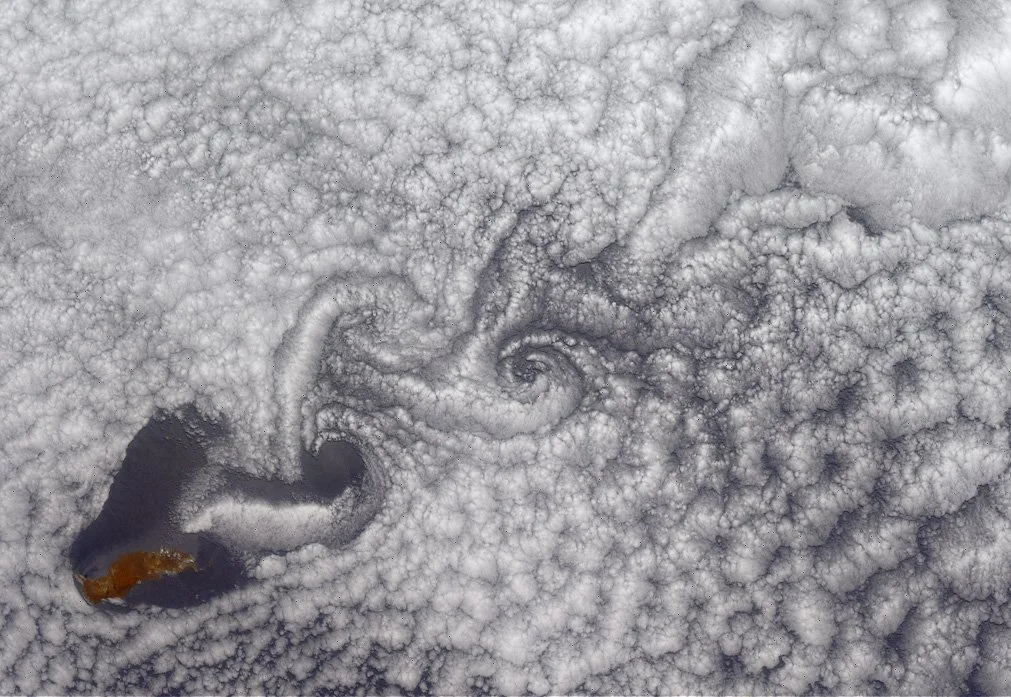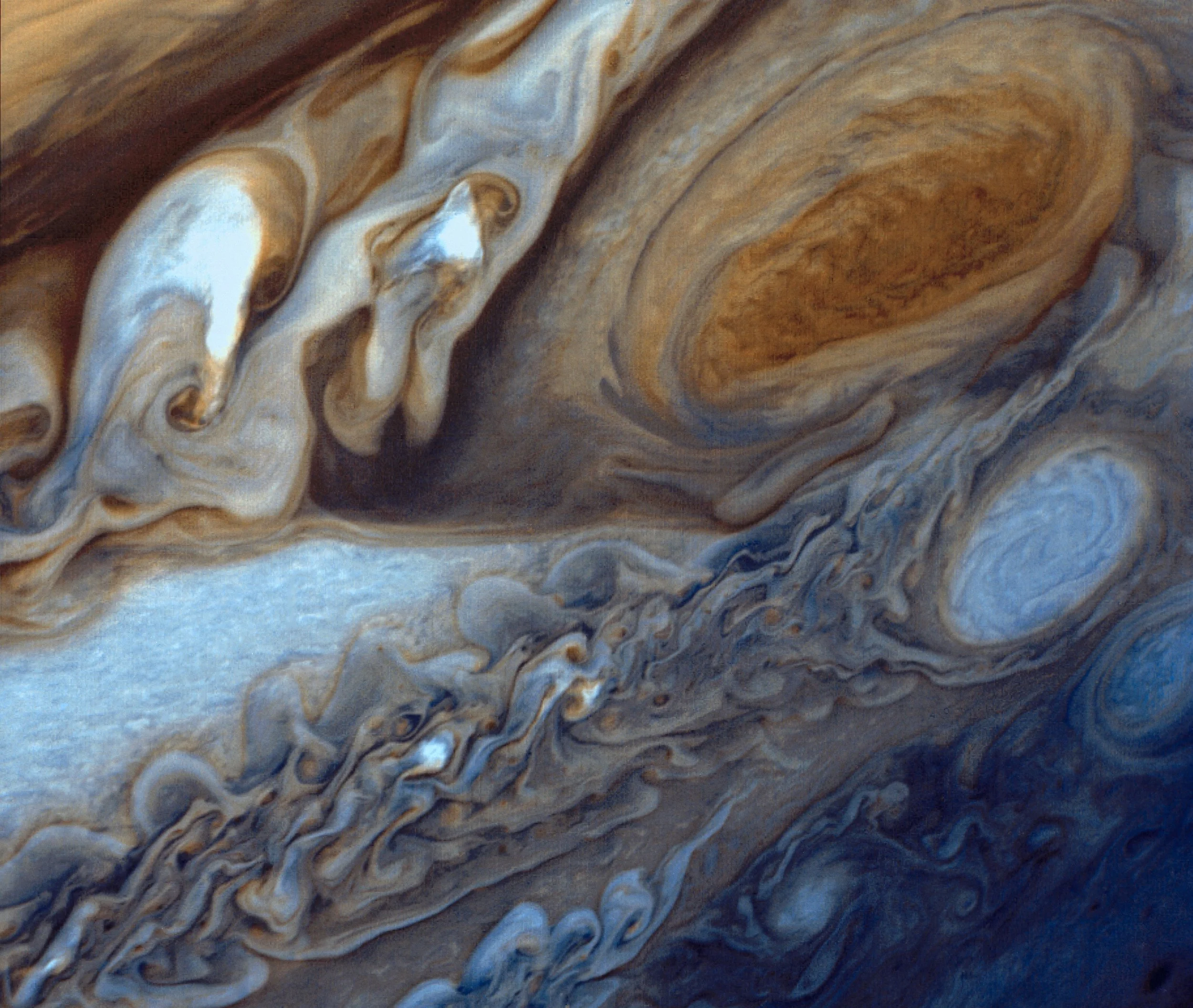
Exploring the Wonders of Fluid Dynamics in Nature: From Ocean Currents to Planetary Storms
Fluid dynamics is the study of how liquids and gases flow and interact with one another and their environment. From the grandest ocean currents to the tiniest drops of water, fluid dynamics plays a vital role in shaping the natural world. The beauty and complexity of fluid dynamics in nature are truly awe-inspiring, and scientists and researchers worldwide are continually exploring its mysteries. In this article, we'll delve into the ways fluid dynamics shapes our planet, from the rolling tides to the roaring wind.
What are Some Examples of Fluid Dynamics in Nature?
If we take a close look at the natural world, we can see how truly breathtaking fluid dynamics can be. Whether we're watching a gentle stream wind its way through a forest or witnessing the power of a hurricane, fluid dynamics is always at work, shaping and transforming the world around us. Many fluid dynamics phenomenon have made their way into the lexicon of everyday life in this way, including vortices, turbulence and currents.
Von Karman Vortex Streets
A really cool fluid dynamics phenomenon often seen in the natural world is the so-called “shedding” of vortices in the wake of an obstruction. Depending upon the specific atmospheric and physical conditions, these vortical structures can be be shed in periodic or repeating patterns, known as von Kármán vortex sheets after the famed Hungarian-American mathematician and fluid dynamicist, Theordore von Kármán.
In the image below, the vortex street behind an island in the Pacific Ocean is visualized by cloud patterns, as seen by NOAA satellite imagery. You can read all about the formation of von Kármán vortices in nature in this article by meteorologist Tom Niziol on Weather Underground.
Aurora Borealis
A widely known example of the beauty of fluid dynamics in nature is the aurora borealis, also known as the Northern Lights. These shimmering, colorful lights dance across the sky, caused by electromagnetic interactions between solar wind and the earth's magnetic field. This phenomenon showcases the intricate connections between terrestrial and inter-terrestrial fluid dynamics and physics.
Fluid dynamics also plays a critical role in the formation of local weather patterns and generates the turbulence you experience while flying in a plane. The movement of warm and cold air masses, fueled by evapotranspiration and solar radiation, leads to the formation of clouds, rain, and even large vortical phenomenon such as tornadoes, cyclones and hurricanes. The intricate dance of these air masses can create stunning displays of lightning and thunder, as well as devastating storms that can wreak havoc on communities.
In another fascinating application of fluid dynamics in nature, plants use a process called transpiration to transport water from their roots to their leaves, where it is evaporated into the air. This process is driven by a combination of pressure differences and the cohesive properties of water, a laminar flow known as capillary action. Without this intricate system, plants would be unable to survive, and the world would look very different.
Fluid dynamics is not just a scientific concept, but a fundamental part of the natural world. From turbulence to vortices and plant transpiration, fluid dynamics shapes and transforms the world around us in ways that are both beautiful and awe-inspiring.
Ocean Current Hydrodynamics
The Earth’s oceans are vast hydrodynamic system that play a crucial role in the earth's climate, weather patterns, and ecosystem stability. The complex and ever-changing flow of ocean currents is driven by several factors, including convection and differences in salinity and density.
One of the most famous ocean currents, the Gulf Stream, is responsible for distributing heat throughout the North Atlantic, helping to keep Europe's climate mild and habitable. The visualization below shows the Gulf Stream stretching from the Gulf of Mexico all the way over towards Western Europe. This visualization was produced using a Computational Fluid Dynamics (CFD) model from the joint MIT/JPL project entitled Estimating the Circulation and Climate of the Ocean. The eddies and vortices shown are fascinating.
The Gulf Stream - a CFD model visualization
The Gulf Stream is just one example of many oceanic currents that exist throughout the world's oceans. These currents are constantly changing in response to many factors, including wind patterns, water temperature, and even the shape of the ocean floor, resulting in wide variations such as slow and shallow currents versus deep, fast currents.
One important aspect of ocean hydrodynamics is their impact on marine life. Oceanic currents can transport nutrients and other important substances throughout the ocean, providing food and habitat for a wide range of species. Some species, such as sea turtles and whales, also rely on oceanic currents for migration and breeding.
Ocean Hydrodynamics and Climate Change
Another factor that affects oceanic currents is climate change. As air and water temperatures rise and glaciers melt, the salinity and density of ocean water are changing, altering the flow of currents. This may have significant and unpredictable effects on weather patterns and marine ecosystems.
In light of the many challenges facing the world's oceans, scientists continue to study the complex and fascinating world of ocean currents. By understanding the dynamics of these currents, we can better predict and respond to changes in the earth's climate and best protect vulnerable marine ecosystems.
How Do Fluid Dynamics Impact Atmospheric Circulation Patterns?
The Earth's atmosphere is a complex and dynamic system, constantly in motion and interacting with itself and the planet's surface. Atmospheric circulation patterns play a vital role in shaping weather systems, from gentle breezes to powerful storms. A global network of weather stations provide a realtime snapshot of global surface wind conditions as seen in the visualization of atmospheric currents below.
Understanding the nature and patterns of atmospheric flows is crucial to predicting and mitigating the damage caused by severe weather. Meteorologists use a variety of tools, including satellites, radar, and computational fluid dynamics models to track and forecast the movement of storms and other weather events. This information can help communities prepare for and respond to severe weather, potentially saving lives and reducing the impact of natural disasters.
How Do Fluid Dynamics Shape the Natural World?
Fluid dynamics is crucial to understanding and appreciating the natural world. Fluid dynamics helps us understand how wind shapes sand dunes or the way rivers carve their way through the earth's surface. This knowledge can help us predict natural disasters, such as floods or landslides, and develop strategies to reduce their impact.
One fascinating example of fluid dynamics in nature can be seen in the way birds fly. Birds take advantage of the airflow around them to reduce drag and increase lift. Perhaps the most amazing example of aerodynamics in the natural world, hummingbirds have a unique method of hovering, appearing to float in midair with wings flapping at 40 beats per second that they are nearly imperceptible to the human eye. By studying the fluid dynamics of bird flight, engineers have been able to design more efficient airplanes and drones.
One of the primary drivers of atmospheric currents and weather patterns is the uneven heating of the earth's surface. As the sun warms different parts of the planet, the air above them heats up and rises, a phenomenon known as natural convection, creating a void of low pressure. Cooler air from surrounding areas rushes in to fill the void. This movement of air from high to low pressure is what we experience as wind. This phenomenon you’ll hear described by meteorologist as a “low pressure system” and why we often feel a noticable cooling ahead of stormy weather as the cooler air mass causes water vapor to condense into clouds.
In addition to temperature differences, the rotation of the earth also plays a role in atmospheric flow. The Coriolis effect, caused by the planet's rotation, leads to the formation of patterns like pressure systems, jet streams, and local currents. These patterns can have a significant impact on weather, as they can steer storms and influence the distribution of heat and moisture around the planet.
The power of atmospheric fluid dynamics is on full display in the formation of hurricanes and typhoons. These massive storms are caused by the intense interaction of oceanic and atmospheric currents, leading to complex and sometimes devastating phenomena. As warm, moist air rises from the surface of the ocean, it cools and condenses, releasing energy that fuels the storm's growth. The rotation of the earth and the Coriolis effect then cause the storm to spin either clockwise (typhoons) or counter-clockwise (hurricanes), depending upon whether originating in the Southern (typhoons) or Northern (hurricanes) hemispheres.
Looking to nature for solutions and inspiration has led to exciting breakthroughs, from more efficient wind turbines to improved medical technologies. For example, the structure of the human heart is incredibly efficient at pumping blood, and engineers have used this natural design to develop more efficient pumps for medical use.
Fluid dynamics is essential to understanding and appreciating the natural world. By understanding the patterns and behaviors of fluids, we can design more efficient systems and develop innovative solutions to complex problems.
One example of the importance of fluid dynamics in ecosystems is the role it plays in the migration of birds. Birds and fish use atmospheric and oceanic currents to conserve energy during long trips, and understanding these currents is essential to conservationists and policymakers who want to protect migratory species.
In aquatic ecosystems, fluid dynamics influences the distribution of nutrients and oxygen, which leads to the growth and health of plants and animals. Understanding the dynamics of water flow and the interactions of its components can help manage and protect aquatic ecosystems for generations to come.
Additionally, fluid dynamics plays a role in the dispersion of pollutants in the environment. By understanding how pollutants move through air and water, policymakers can create regulations that protect human health and the environment.
Another example is the impact of fluid dynamics on soil erosion. Water flow and wind patterns can cause soil erosion, which can lead to a loss of nutrients and damage to ecosystems. By understanding these patterns, farmers can make informed decisions about planting and land use, and conservationists can take steps to prevent further damage.
Overall, fluid dynamics is a critical field of study for anyone interested in protecting and managing the natural world. By understanding the complex interactions between air and water flows, we can make informed decisions that ensure the health and longevity of our planet's ecosystems. Often this requires constructing and testing of a experimental or computational fluid dynamics model. Perhaps the most impressive hydrodynamics model of a natural fluid dynamics system ever constructed was the 200 acre model of the Mississippi River Basin constructed by the Army Corps of Engineers, as shown in the image below.
Extra-Terrestrial Fluid Dynamics
Fluid dynamics is not limited to the world we live in; it extends beyond our planet. Other planets, moons, and comets all have unique fluid dynamics shaped by their environments. Scientists study these fluid flows to gain a better understanding of the entire universe.
For example, fluid dynamics has helped scientists understand the conditions of planets within our solar system. Their research revealed the existence of planetary weather, complete with storms, atmospheric currents, and seasonal changes, all of which give insight into the planet's origins and history.
One fascinating example of fluid dynamics in space is the Great Red Spot on Jupiter. This massive storm has been raging for centuries and is larger than the size of the Earth. Scientists have used fluid dynamics simulations to study the storm's behavior and predict its future movements.
Another example are the geysers on Saturn's moon, Enceladus. These geysers shoot out plumes of water vapor and ice particles into space, creating a stunning visual display. Fluid dynamics has helped scientists understand how these geysers are formed and how they are sustained over time.
Fluid dynamics also plays a role in the study of comets. Comets are made up of ice and dust, and as they approach the sun, they begin to heat up and release gas and dust particles. This process creates a tail that can be seen from Earth. Fluid dynamics has helped scientists understand how this process works and how it varies from comet to comet.
Overall, the study of fluid dynamics outside of Earth has provided valuable insights into the workings of the universe. By understanding how fluids behave in different environments, scientists can gain a better understanding of the origins and evolution of celestial bodies, as well as the physical laws that govern our universe.
Fluid Dynamics in Global Warming and Climate Modeling
The world's climate is constantly changing, with enormous consequences for life on our planet. Research has shown that human activities, particularly the burning of fossil fuels, are contributing to drastic changes in the earth's climate. Fluid dynamics and climate modeling help scientists understand these changes and predict future patterns.
By studying past climate changes and simulating future scenarios using fluid dynamics based models, scientists and engineers are playing a crucial role in the fight against climate change. These model help to guide policy decisions and identify new solutions to prevent further damage to our planet. Through a combination of research, data analysis, and public policy, we can work together to create a more sustainable, healthier planet.
Conclusions
Fluid dynamics is a complex and fascinating field that helps us understand the beauty and intricacy of the natural world. The flow of water and air through ecosystems, the formation of weather patterns and the structure of planets and moons are all shaped by fluid dynamics.
By exploring these phenomena and looking for inspiration in nature, scientists and researchers around the world are making breakthroughs in fields ranging from alternative energy to medicine. But more than that, fluid dynamics can help us develop a greater appreciation for the complexity and wonder of the natural world around us.







